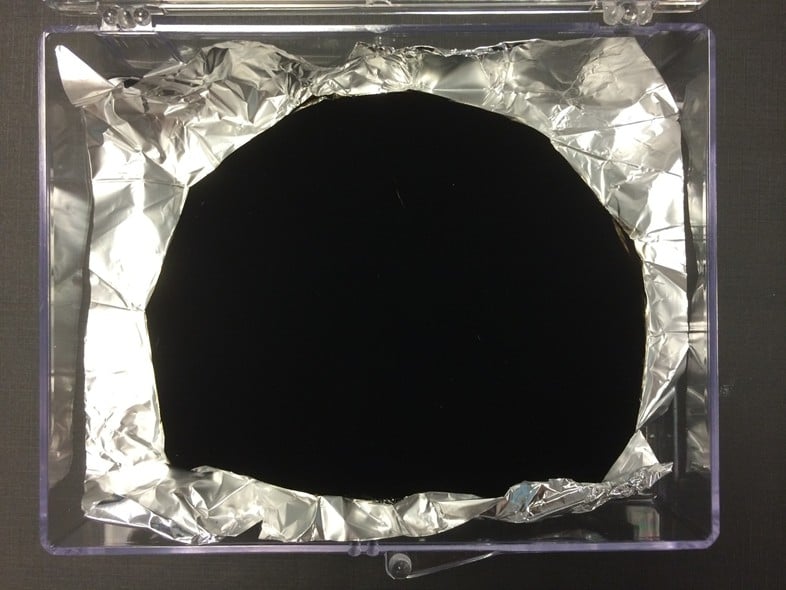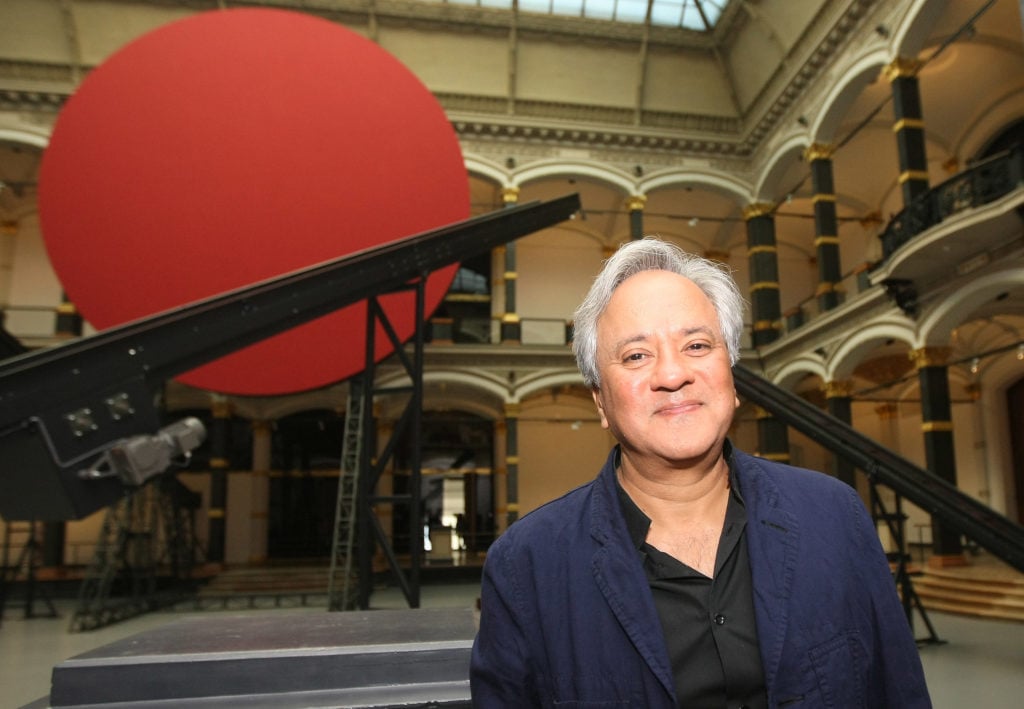Art World
Anish Kapoor Adds New ‘Super Black’ to His Palette


Sculptor Anish Kapoor is embracing Vantablack, the newly-invented blackest black ever, and plans to incorporate the substance into his artistic practice, reports the BBC.
Vantablack was invented by London-based Surrey NanoSystems and announced in July, dubbing it a kind of “super black.”
“It’s blacker than anything you can imagine. It’s so black you almost can’t see it,” Kapoor told the BBC. “It has a kind of unreal quality.”
The artist has always been drawn to exotic materials, and Vantablack seems especially well-suited for creating the types of disorienting and unsettling sculptures for which Kapoor is known. Although the company that created it had entirely different uses in mind when it developed the product, expecting it could help camouflage stealth aircraft, or black out light inside telescopes, improving space photography, Surrey NanoSystems isn’t about to turn up its nose at the arts.

British sculptor Anish Kapoor poses in front of his work prior to the opening of the “Kapoor in Berlin” exhibition on May 17, 2013 in Berlin, Germany. Photo by Adam Berry/Getty Images.
“We are delighted that an artist of Anish Kapoor’s stature and reputation is interested in exploring its possibilities in the creative sphere,” the company’s chief technology officer, Ben Jensen, told Dazed Digital.
The unique substance comprises arrays of vertically aligned carbon nano tubes (each about one 10,000th the width of a strand of human hair) that Kapoor likens to a forest of very tall, incredibly thin, densely packed trees. As light enters that forest, it is trapped, with only 0.035 percent of it reflected. This gives Vantablack a reflectivity, or albedo, of 0.00035 on a scale of zero to one. By comparison, fresh snow has an average albedo of .9, and pure charcoal, one of the darkest substances in nature, has one of 0.04.
Photos show a patch of Vantablack grown on a crinkled sheet of aluminum, the hills and valleys on the surface impossible to detect in the matte black substance. “It is like staring into the kind of black hole found in outer space,” Kapoor told Dazed Digital.
“It’s effectively like a paint,” the artist told the BBC. “Imagine a space that’s so dark that as you walk in you lose all sense of where you are, what you are, and especially all sense of time.” In such an environment, he believes, “something happens to your emotional self and in disorientation one has to reach in for other resources.”
Based on the delicate, innovative technology involved, a large scale artwork employing Vantablack would seem cost-prohibitive. Nevertheless, Kapoor seems unconcerned by the potentially astronomical price tag, and predicts that he’ll be able to paint an entire room in Vantablack in a matter of months.